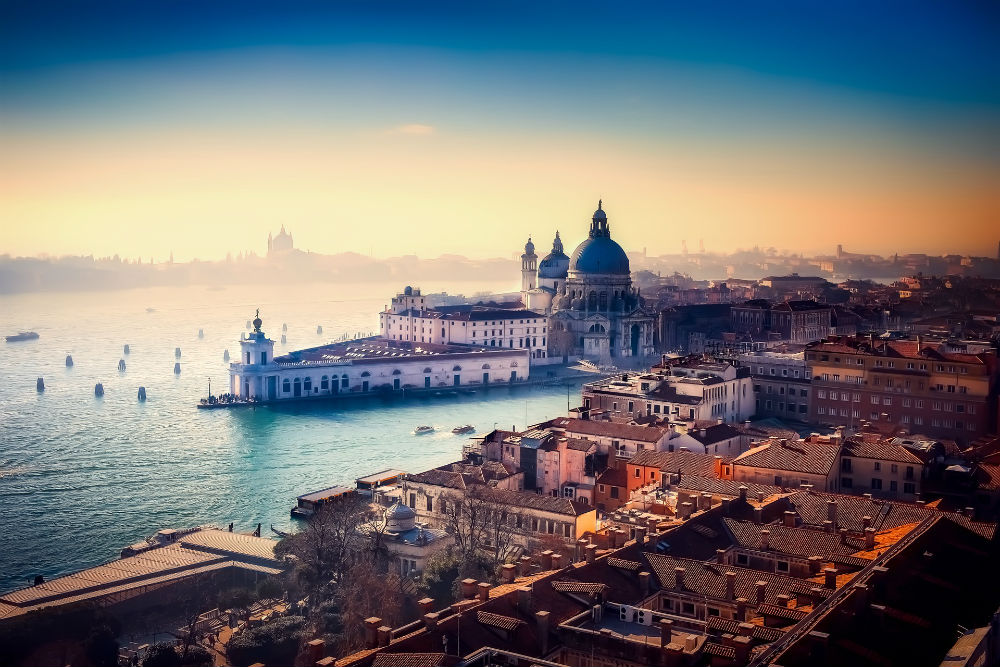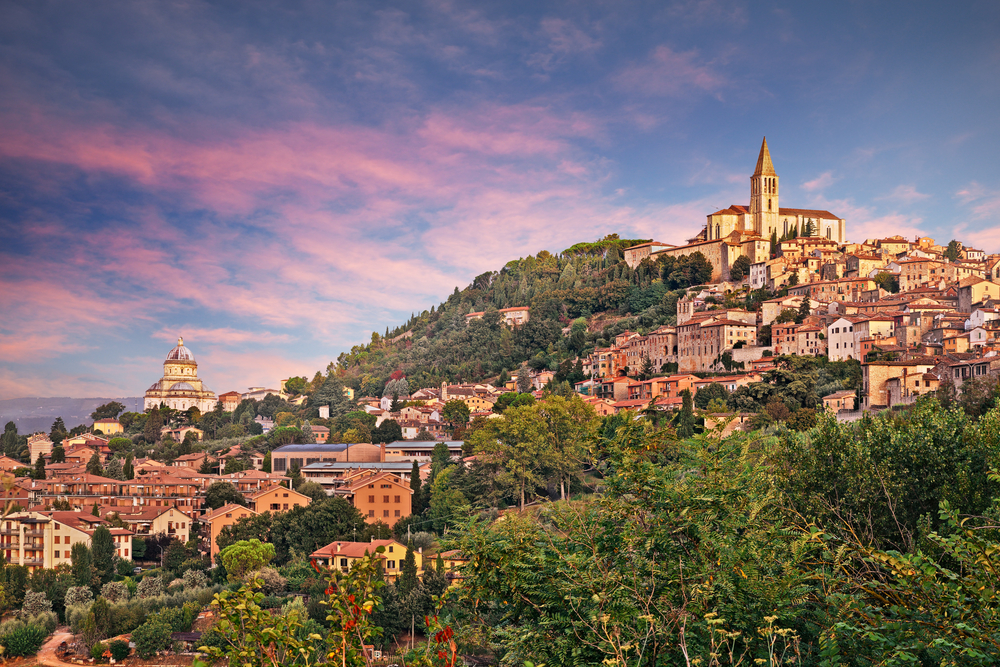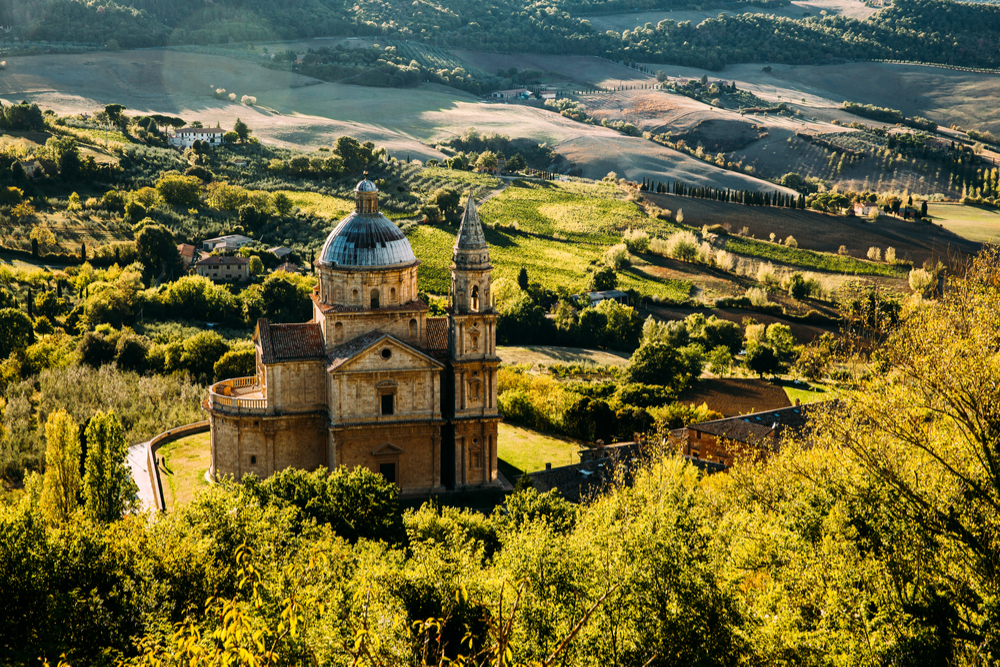Florence, Italy: Insider’s Guide
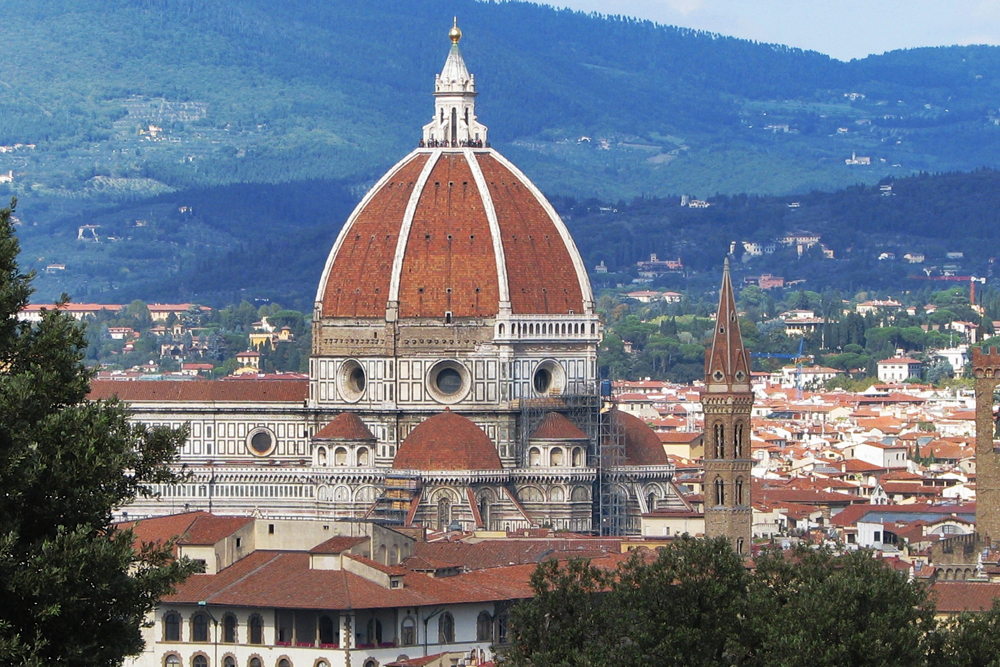 Florence's Duomo is perhaps the city's most famous landmark. Photo: Brian Dore.
Florence's Duomo is perhaps the city's most famous landmark. Photo: Brian Dore.
The insider advice on this page is from two of Wendy’s Trusted Travel Experts for Italy: Maria Gabriella Landers and Brian Dore of CIU Travel.
Call on Maria and Brian when you want the ultimate culinary tour of Italy, or to be matched with charming and terrifically knowledgeable private guides and drivers who have keys to doors you wouldn’t even know how to look for, let alone open. Maria has a background in art history, Brian is a former chef; they met as professional opera singers. Through this husband-and-wife team, you can gain entrée to noteworthy winemakers, charismatic artisans, secret private gardens, and the like. Maria and Brian have a home in Umbria and love to show travelers that region’s hidden charms, but they are equally comfortable making arrangements everywhere from the Amalfi Coast to Lake Como—as well as farther north into Switzerland (Brian is an enthusiastic hiker and skier who’s tested out many Alpine slopes and trails). When it comes to hotels, Maria and Brian will make sure you’re shown to the rooms with the most beautiful views in the country’s most atmospheric boutique 5-star and 4-star properties.
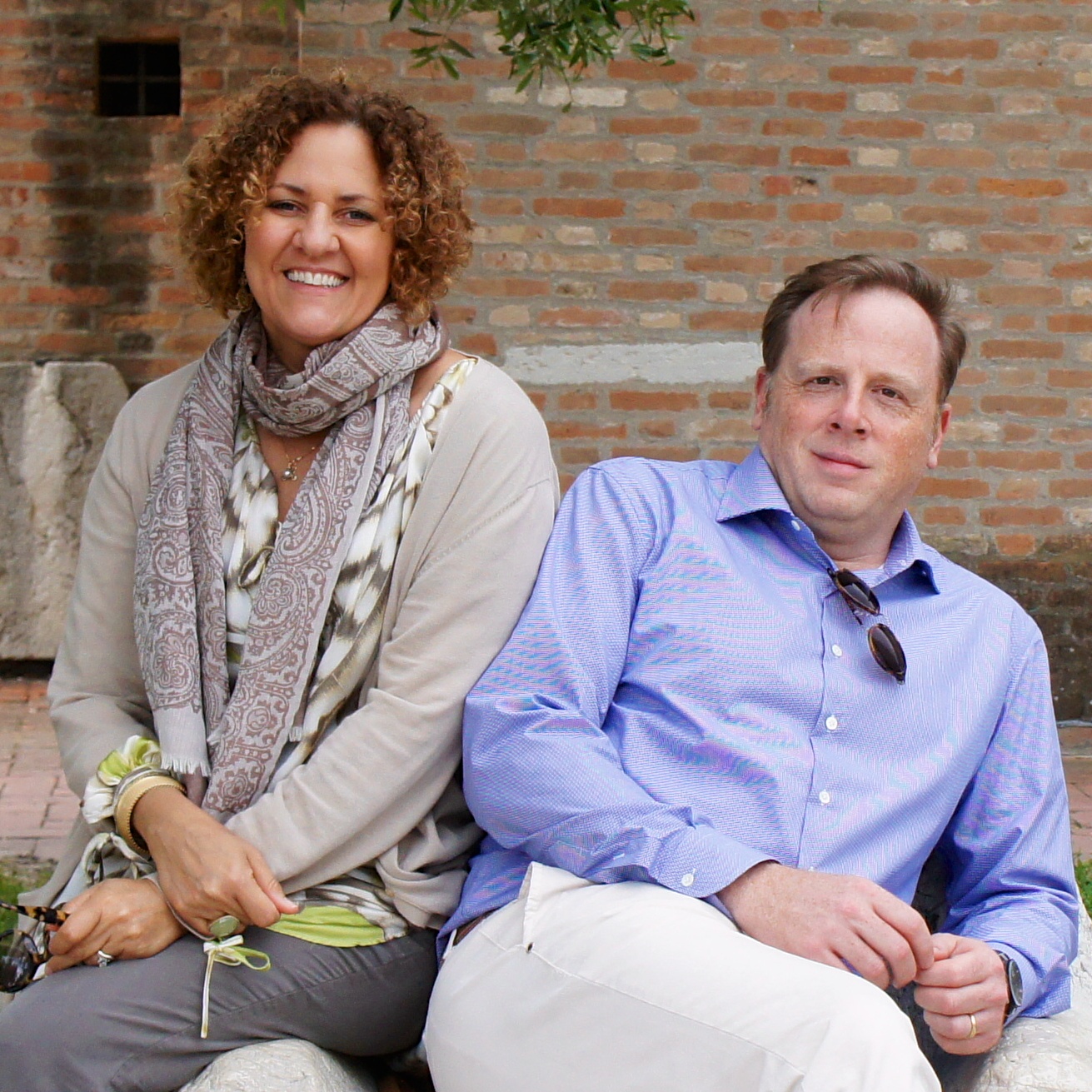
Where to Stay and Eat
Best bang-for-your-buck hotel
The Grand Hotel Minerva is a beautiful hotel with recently updated rooms in a contemporary style and a great location in the city center. The hotel boasts one amenity that is rare in Florence—a small rooftop pool (seasonal). The rooms have been renovated and many have views of the Duomo or piazza. This is five-star luxury at four-star nightly rates.
Meal worth the splurge
One of only eight restaurants in Italy to be awarded three Michelin stars, Enoteca Pinchiorri is everything you’d expect from one of the country’s most formal and exclusive restaurants. For those who are interested in an over-the-top, once-in-a-lifetime food-and-wine experience, expect to pay at least 200 euros per person. The wine list matches the menu euro for euro: If a bottle of 1999 Masseto tempts your palate, your dinner tab will cost you more than your airfare from the States.
Dishes to try
Drawing from the region’s rustic, rural tradition, Tuscan specialties are generally composed of a few simple but high-quality ingredients that, when combined, create a final product greater than the sum of its parts. Ribollita (the best vegetable soup you will ever have), papa al pomodoro (how good can stale bread cooked in tomato sauce be? Just you wait), bistecca fiorentina (just beef on the grill, but what beef!), and—if you’re truly adventurous—trippa (which is a nicer way to say tripe, which is a nicer way to say offal) should all be savored. Be sure to wash it down with some local Chianti for the best farmer’s meal of your life.
Try Trattoria I’Parione for these classics served with modern flair. For the purist, at the no-frills Trattoria Mario near the San Lorenzo Market you’ll be seated elbow to elbow with strangers and served with matter-of-fact simplicity, but there’s no more authentic Tuscan cooking in Florence.
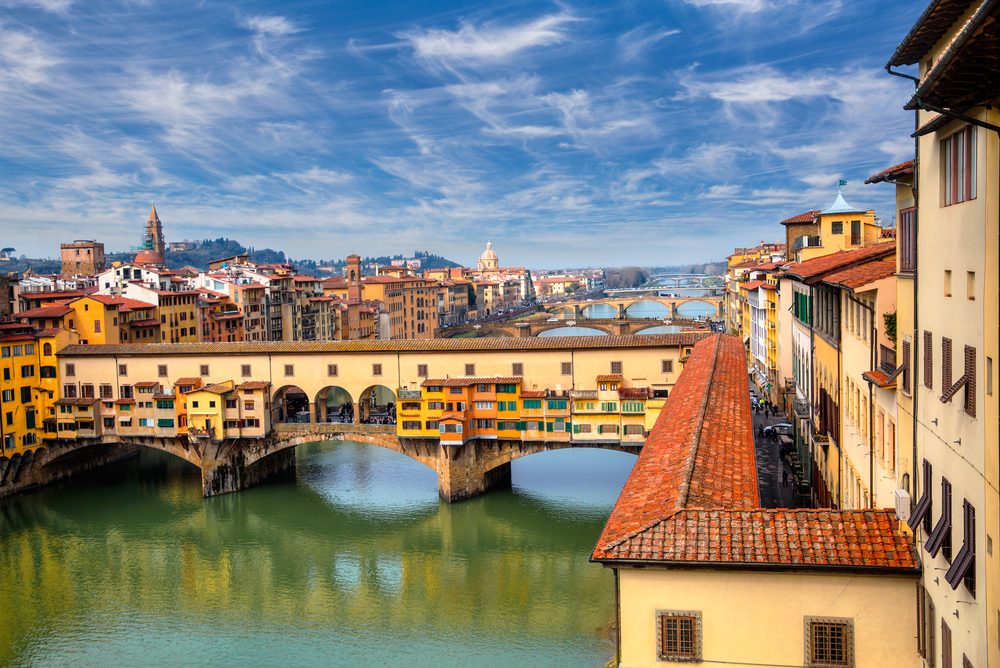
Florence’s famous Ponte Vecchio dates to medieval times. Photo: Shutterstock
What to See and Do
Don’t miss
Palazzo Davanzati on Via Porta Rossa houses the Museo dell’Antica Casa Fiorentina (the Museum of the Historic Florentine Home), where the collection of original furnishings, artworks, and frescoes shows visitors how homes in the 1400s were laid out and appointed.
Museo dell’Opificio delle Pietre Dure (the Museum of the Workshop of Semi-Precious Stones) is hidden in plain sight right in the center of Florence and holds the small but excellent collection of pietre dure works amassed over the centuries by the Opificio, which was one of the most important artistic workshops in Renaissance Italy. Many of the pieces—intricately inlaid stoneworks on tabletops and cabinets and so on—date back to the time of the Medicis.
Don’t bother
If you are not a true art enthusiast and don’t have any special interest in Italian Renaissance painting, skip the Uffizi. In summer especially, the museum gets so packed with tourists and groups of cruise-ship day-trippers, with everyone taking selfies in front of the art, that it can be more of a headache than it’s worth. Maria and Brian can get you in without having to wait in the snaking lines outside, and their private guides do their best to navigate the crowds, but it isn’t possible to avoid the crush entirely. There are many lesser-known options that showcase big-name artists, such as the Pitti Palace, where you’ll get to see the work of greats like Vasari, Giotto, the della Robbias, and even Henry Moore.
Cheap thrill
Get picnic provisions upstairs at the Mercato Centrale, where you’ll find tasting stands with ready-to-eat wares and specialty shops selling everything from Tuscan cheeses to artisanal beer. Once you’ve stocked up, hail a taxi to take you about seven miles from Florence’s center to Pratolino, where the Park of Villa Demidoff awaits. This estate, originally built by the Medicis in the mid-1500s, had been abandoned for centuries before Prince Paolo Demidoff restored it in 1872. Now a public park, the grounds are dotted with the remains of the original artificial caves and fountains, a number of statues, a small lake, and miles of walking paths.
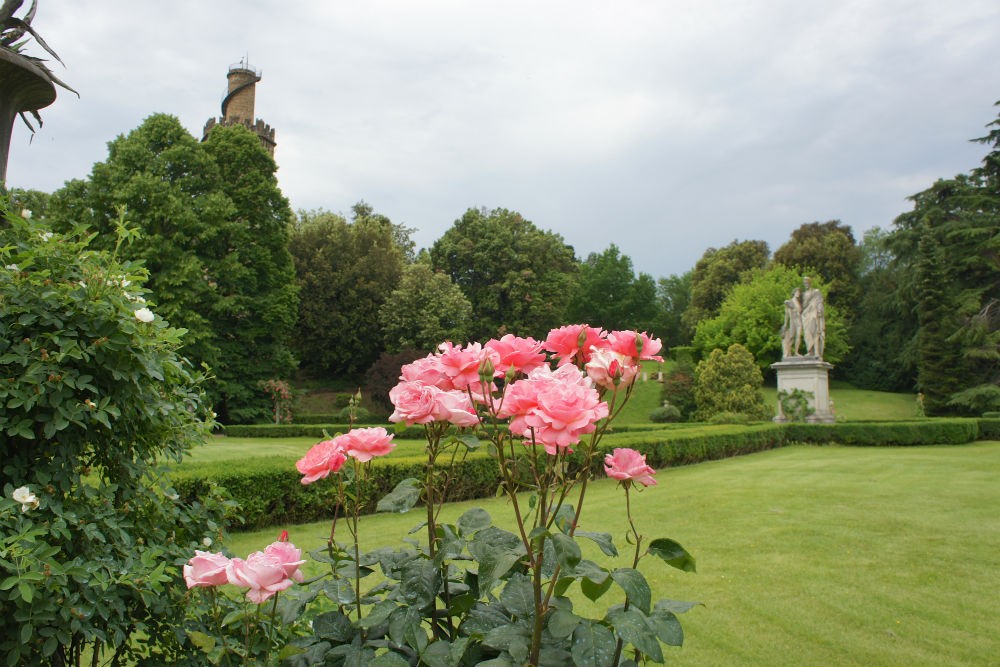
Giardini Torrigiani is accessible only with the right connections. Photo: Brian Dore.
Bragging rights
Maria and Brian can arrange to get you inside Europe’s largest private urban garden, the nearly 17-acre Giardino Torrigiani, with the Florentine nobleman who owns it as your guide. It’s a 16th-century botanical garden with an extraordinary wealth of tree and plant species from all over the world, not to mention historic greenhouses and lemon houses. You’ll end your visit with a casual aperitivo al fresco in the garden with your host, a charming thirtysomething marquis who’s much cooler than what you might expect from ancient Italian nobility.
Downtime
In Florence, most museums are open on Sundays and closed on Mondays (as are many shops and restaurants), so if you are planning a day of rest, Monday may be the better choice. Drive past the final ring of suburbs surrounding Florence, then walk from the Dominican Convent of San Domenico up the slope to quiet Fiesole, perched on a hilltop overlooking Florence five miles away.
Best Times to Go
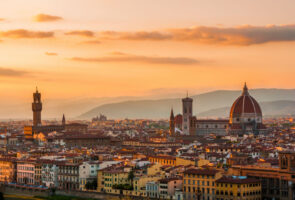
The hands-down best months to visit Florence are April, September, and October (given the mild temperatures and moderate crowds).
Florence’s best festival—La Festa di San Giovanni, or the Feast Day of Saint John, its patron saint—falls in the hot and crowded month of June. Processions in Renaissance costumes, complete with drum and flag corps; a rousing match of calcio storico (picture rugby with kickboxing allowed); and a spectacular fireworks display over the Arno River all make this an unforgettable time to visit—if you can bear it.
Worst Time to Go
Summer in Florence can be miserable: The city is ringed with hills, which trap heat and humidity in the valley. Locals escape as often as they can from June through August, and museums and other sights are not well air-conditioned.
Instagram Moment
Try snapping this Renaissance capital from the middle of the Arno, as you’re rowed on the placid water under the Ponte Vecchio and past the pastel palazzi lining the riverbanks. I Renaioli, Florence’s rowing association, offers boat trips down the Arno; ask Maria and Brian to organize an evening trip so you can capture the golden-tinged city at sunset.
The Souvenir
Dolceforte’s prettily packaged Tuscan chocolate, candy truffles, cantucci cookies, and other sweet-tooth–satisfying treats.
Biggest Rookie Mistake
Buying souvenirs on the Ponte Vecchio. The bridge is stunning and unique, the views are spectacular, and the shops are charming and filled with beautiful jewelry, leather goods, etc.; but costs are high and you may be better off window shopping here and purchasing souvenirs at equally beautiful shops which are a bit off the beaten path. Or better yet, patronize local artisan street/market vendors.
Must-Have App
Though most Florentines (especially those who work in tourism) speak English, you may get tripped up on the odd untranslated menu or sign. World Lens translates printed words from one language into another using your smartphone’s camera.
Tipping Tip
Italians don’t tip in restaurants. You may have read that there is a standard 10 percent. Or that the bill is rounded up. Or that you are expected to leave a little something. This is bunk. Italians don’t tip in restaurants. (Italian staff are paid a living wage and/or are members of the owner’s family.) You can tip, if you really want to. Or if you feel the service was extraordinary. Go ahead. But Italians don’t.
Don’t Forget to Pack
Opera glasses are fantastic for getting three times closer to that Giotto fresco in the church, hunting up a signature on that mystery painting in the palazzo, or getting a good look at a detail in that Botticelli in the museum. They are chic, discreet, easy to pack, and won’t upset the guards.

